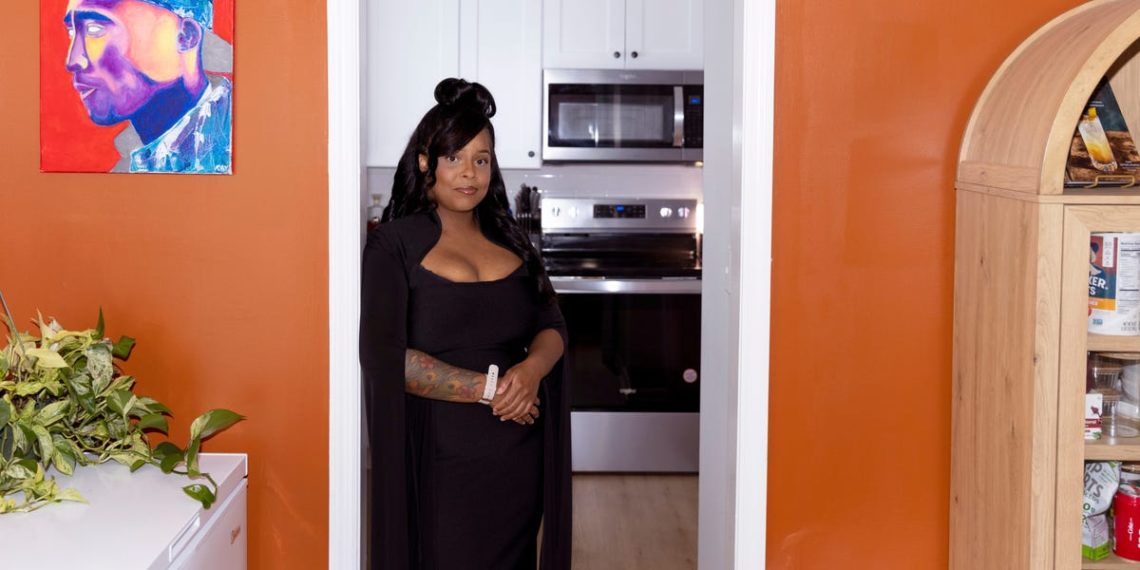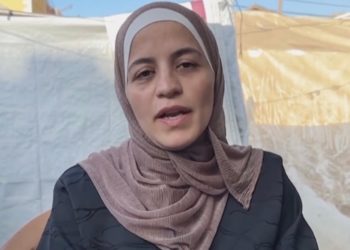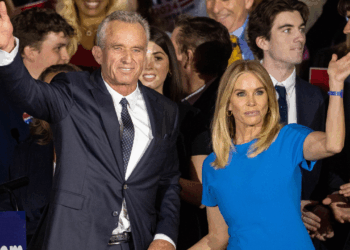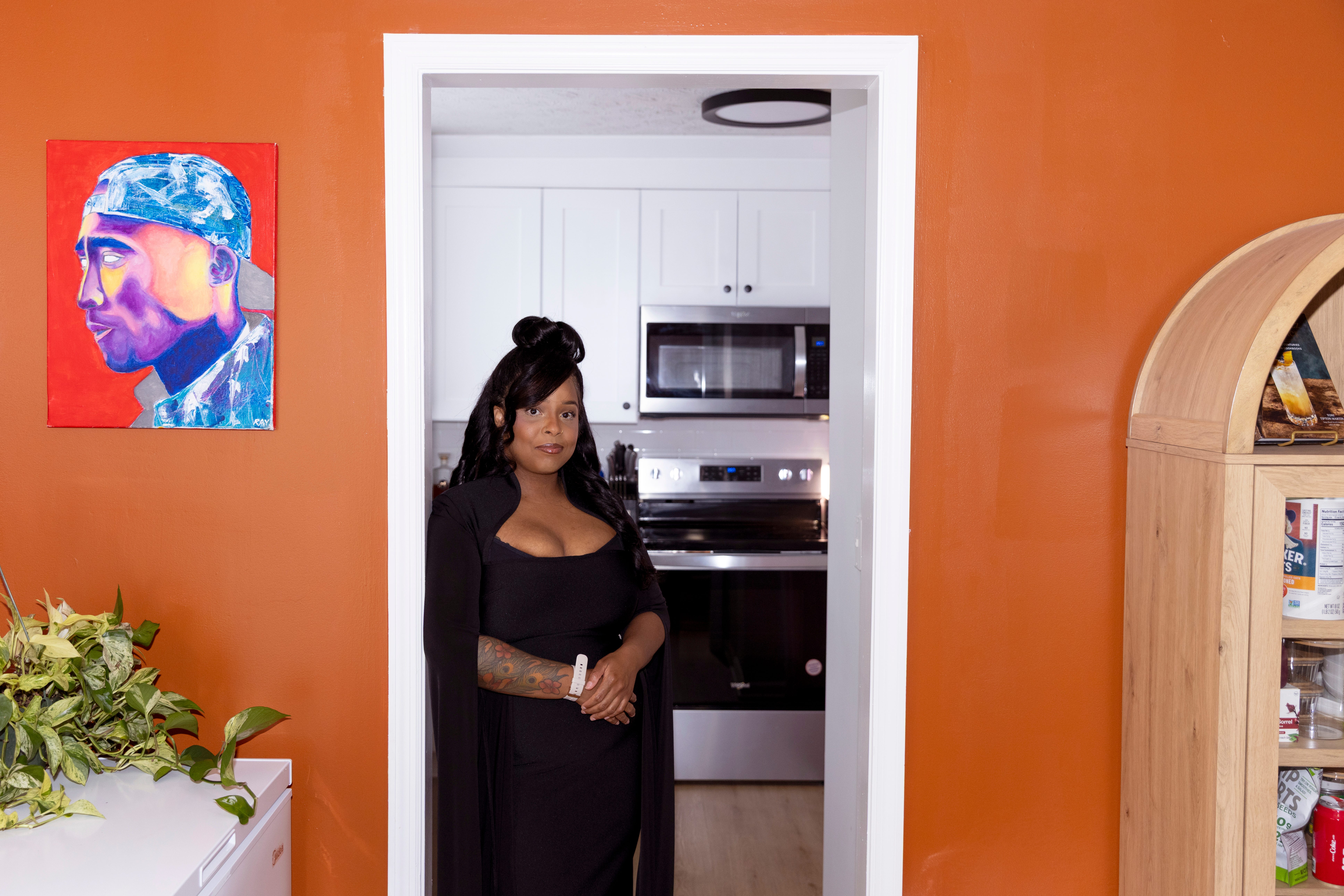
Kendrick Brinson for BI
Althea McBride’s Georgia home is an “Afro boho” oasis.
Her living room and hallway walls are painted black, acting as a dramatic background to her many African sculptures and art. The dining room’s burnt orange walls are decorated with vinyl records like Aretha Franklin’s “Knew You Were Waiting: The Best Of Aretha Franklin 1980-1998” to Kendrick Lamar’s “GNX.”
It’s been a year since McBride bought her home, and outside a few hiccups, like a wasp infestation and disputes over property lines, everything is looking exactly how she envisioned it — literally.
“I used Canva to help design some of it before I even moved into the house, just by looking online at the pictures that they had on Zillow,” McBride told Business Insider. “I was able to download those and remodel it how I wanted. So my living room is exactly how I pictured it.”
What she couldn’t picture years ago was being a homeowner. Growing up in Los Angeles, homeownership was not something that she thought would be possible at 34 years old — and if she stayed in Los Angeles, it still might not be.
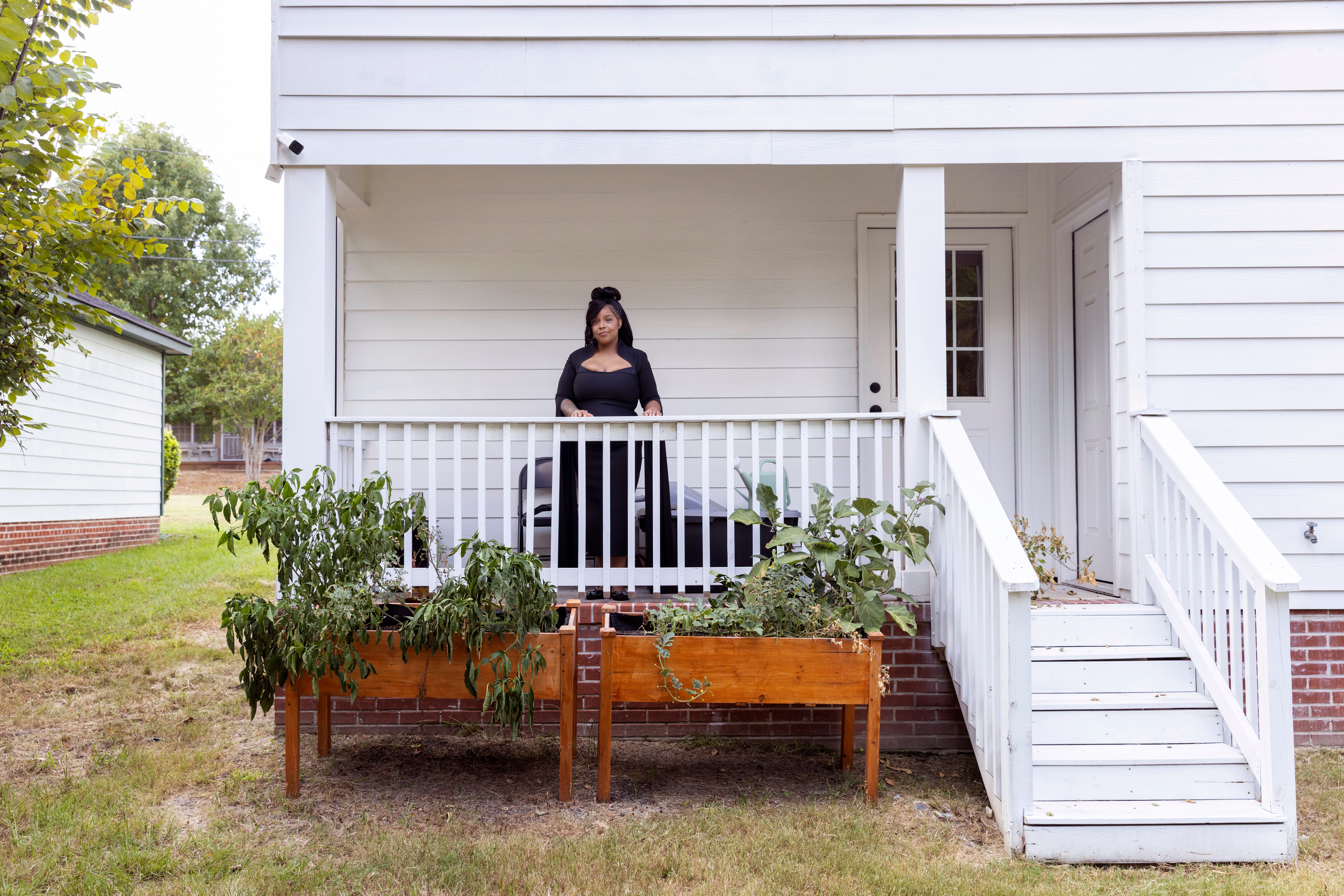
Kendrick Brinson for BI
A financial incentive to move from California to Georgia helped McBride, now 35, decide to leave Los Angeles — although it didn’t take that much convincing. She was tired of the big city’s fast-paced lifestyle and slow-moving traffic and was looking for an out.
McBride applied to a remote-worker incentive program offered by Columbus, Georgia, a city in the western part of the state that borders Alabama. She received $5,000 in cash, as well as a range of other perks like a one-year membership to the Columbus Aquatics Center and a coffee date with the mayor.
Getting a little extra cash to move to a smaller city with a lower cost of living enabled McBride to become a homeowner for the first time. She’s enjoying decorating and living in her own house, and has grown accustomed to Southern culture and the area’s slower pace of living.
After following the ups and downs of McBride’s move in a series of interviews over the course of her first year in Columbus, she told me that overall, she’s pleased with her decision.
“I don’t really miss California — not yet,” she said.
Finally a homeowner
McBride didn’t expect to become a homeowner in her 30s. “I had the typical millennial experience: Went to college, had high student loan debt, and then I went through back-to-back layoffs. I was like, ‘What am I going to do?'”
At the time, she was working as a senior paid search manager for a marketing agency and living in Woodland Hills, Los Angeles — a neighborhood one exit shy of where the Kardashians live — and paying $3,400 a month for a two-bedroom apartment.
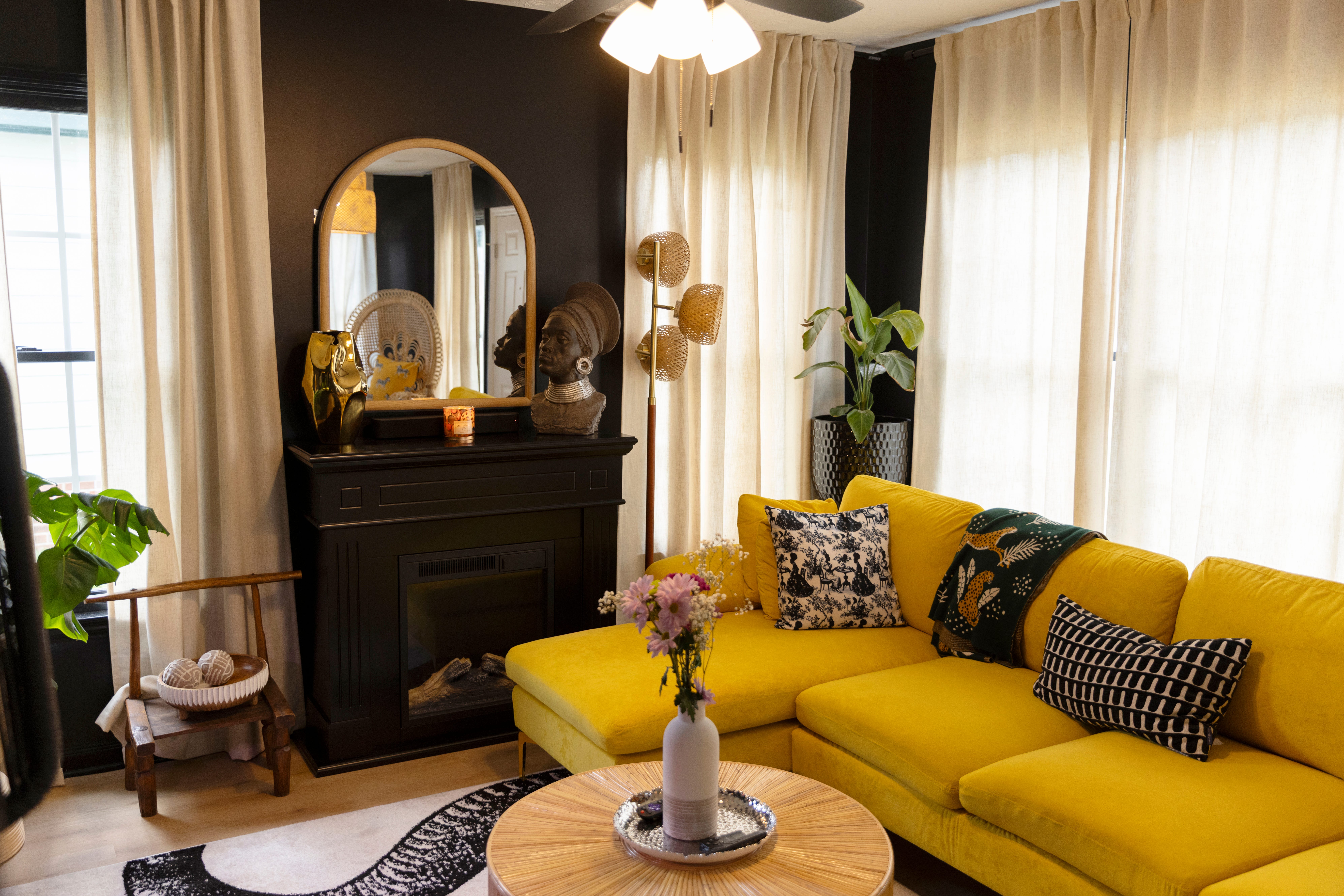
Kendrick Brinson for BI
McBride didn’t need to know all the intricacies of buying a house to quickly realize that it would have been hard to make it work in Woodland Hills, where the median sale price was about $1.2 million in August 2024. Still, she tried saving money for a down payment to buy in California, but it wasn’t enough — and she didn’t qualify for much assistance because her salary was too high. So she started looking for places to live outside California, such as upstate New York and Virginia.
Though McBride graduated from Spelman College in nearby Atlanta and has family in Columbus, Georgia, the small city with a population of about 207,000, was never on her radar as a place to live.
“I was talking to my baby cousin, DJ, and he kept saying, ‘You should come to Columbus, cousin,'” McBride said. “I’m like, ‘What am I going to do in Columbus?'”
It wasn’t until she saw the incentive program go viral on social media that she considered it.
“I looked at it and I was like, ‘Well, this is perfect,'” McBride said. “If it’s meant to be, I’ll apply and hear back from them — and that’s exactly what I did.”
That was March 2024. That May, she learned she’d been accepted to the program. In August 2024, she closed on a three-bedroom home for $175,000. Now, McBride’s mortgage costs her about $1,500 a month — less than half of her rent in LA.
The benefits of living in Columbus aren’t just financial. Her home has more space for her to enjoy her hobbies, one of which is growing her own food. In California, McBride made it work by growing produce on her patio using storage bins with holes cut in the bottom for drainage. However, if she ever wanted to expand that operation, she would need more room — and a bigger budget.
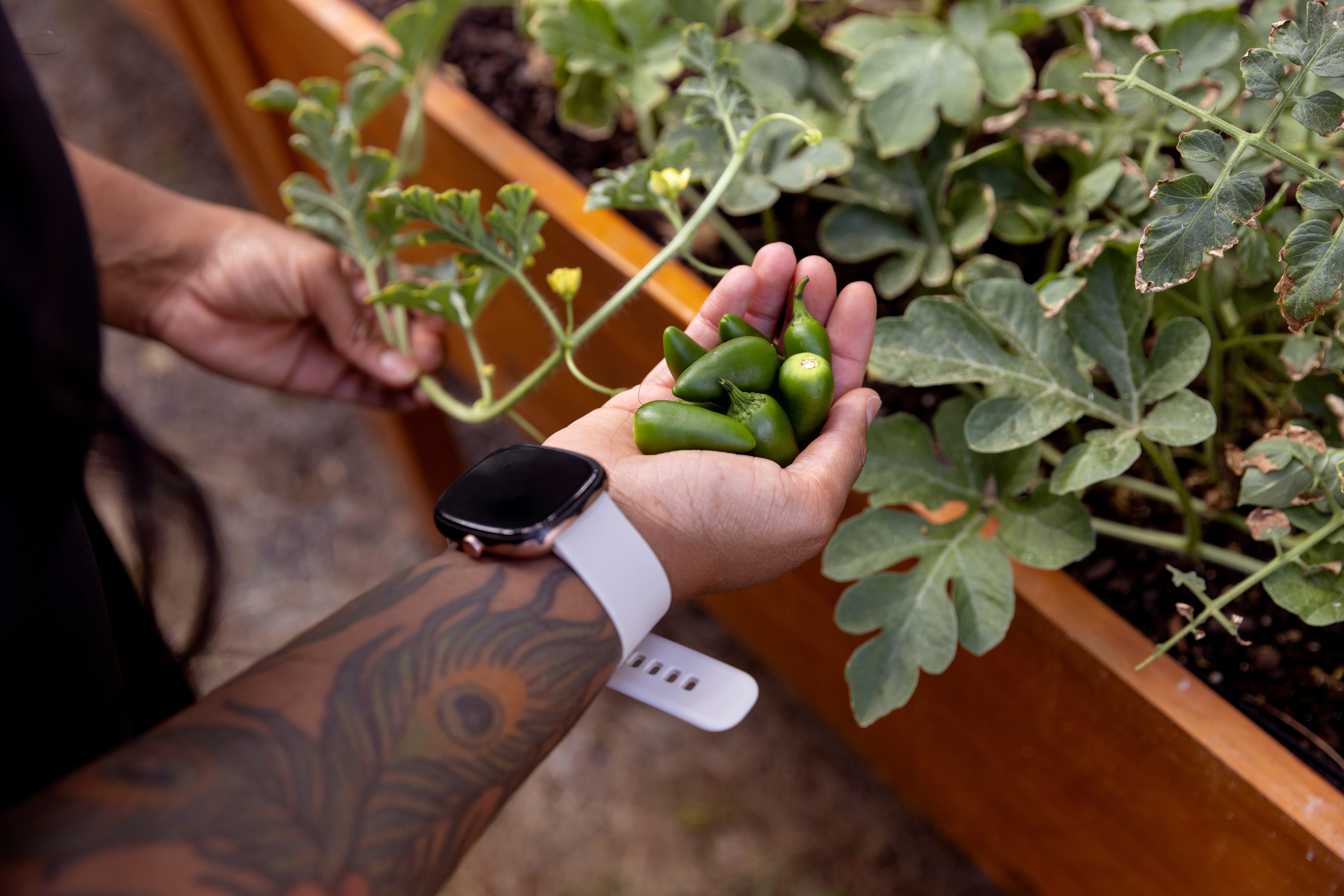
Kendrick Brinson for BI
“In California, you’ve got to have the money. The homes are $500,000-plus, but you don’t get the yardage. You don’t get the land like that. So it makes it kind of hard.”
McBride never dreamed of having a greenhouse, let alone a place to put it. But in Georgia, she has plans to build one on her property. She’s already growing lettuce, blueberries, bananas, red and white onions, peppers, and eggplants, and hopes to plant even more.
If she has to put in a little elbow grease to make the home and the yard her own, so be it.
“I went in with the intention that I might have to put work into a home,” McBride said. “I may have to get in there with a hammer. I may have to get in there with some paint and fix it up the way that I want to, but at least I have that.”
Settling in to small-city life
For the first few months after moving, McBride frequently traveled to Atlanta — a nearly two-hour drive from Columbus — and used it as a crutch for social activities and shopping. (Her nearest Trader Joe’s, she noted, is in Atlanta). Although she still travels to Atlanta occasionally, now that she’s established her community in Columbus, she’s found more to do closer to home. She joined the Urban League of the River Valley as well as the Columbus chapter of the National Council of Negro Women.
“I’ve been doing all the community service events. We’ve been going to different galas. We’ve been going to all types of stuff out here in Columbus,” she said. “Every time I meet somebody random, they either know my family, they either all go to the same churches, or they grew up with each other. Everyone knows each other or knows of somebody, which is very helpful when trying to get to know people out here.”

Kendrick Brinson for BI
The way McBride sees it, that $5,000 cash incentive wasn’t what convinced her to move 2,000 miles across the country, though it was a nice sweetener that helped cover her closing costs and moving expenses. It was more so the program’s promise of activities and community-building opportunities that helped lighten the social burden of moving to a new city.
“For me, the cash incentive is reimbursement — that’s like icing on the cake,” McBride said. “With this, you’re not just moving. Now it’s like there are some activities I can look forward to, there are things where I’ll be able to go out there and just meet completely different people with different backgrounds and really get a head start on my personal Columbus community.”
She’s attended program-sponsored events such as dinners with other program members and coffee with the mayor, B.H. “Skip” Henderson III, who mapped out a vision for what Columbus could look like in the future.
Now, McBride said she sees herself in that vision.
“I’m happy with my decision,” she said. “My goal is to stay here for a couple of years at least.”
Read the original article on Business Insider
The post She was paid to move to a new state. One year later, she’s thriving in Georgia. appeared first on Business Insider.
